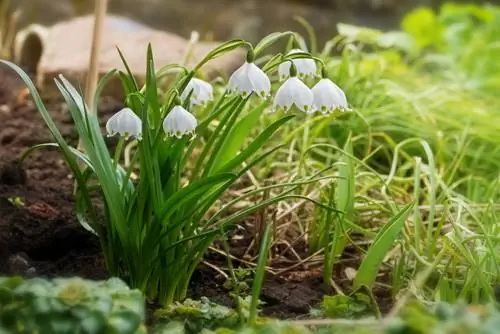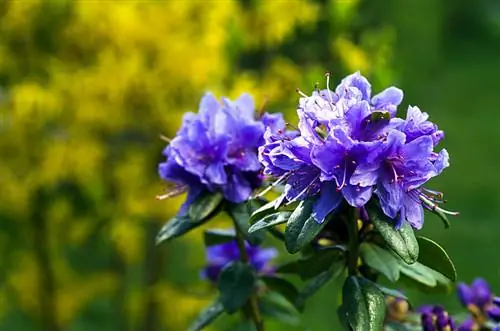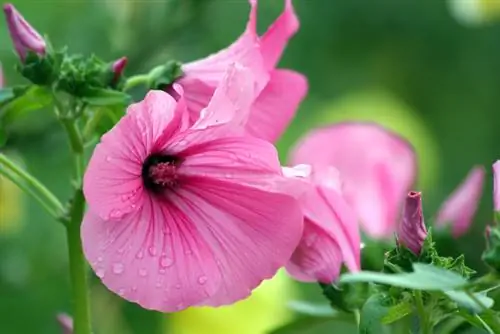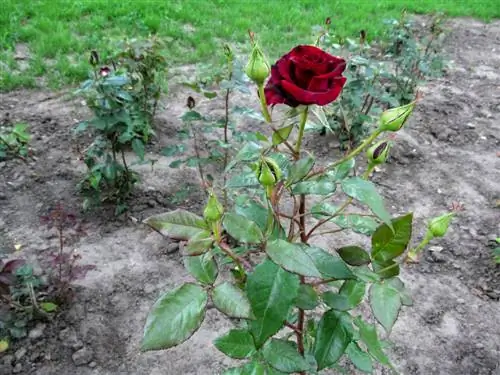- Author admin [email protected].
- Public 2023-12-16 16:46.
- Last modified 2025-01-23 11:22.
Märzenbecher grow in the wild. They can be found in shady forests near rivers. No human hand cares for them, yet they bloom beautifully every spring. Can they cope alone in a cultural garden? Or is a minimum of care appropriate?

How do I care for Märzenbecher properly?
Märzenbecher care consists of the right location (shady to partially shaded, moist soil, ideally near water sources), initial supply of nutrients (compost when planting), allowing it to grow wild or removing dead flowers and disposing of the completely dried leaves.
The right location is important
Do yourself and the onions of the Märzenbecher something good. Let them grow as if they were thriving in the wild. Therefore, only plant them in suitable locations.
- shady to partial shade
- moist soil
- Proximity to water sources is ideal
- Pond, stream, etc.
At a location that meets all of these criteria, the Märzenbecher will hardly require you to do any work. On the contrary, it will delight you with the most magical flowers when it blooms.
Tip
The number of flowers increases from year to year, because a satisfied mother bulb diligently produces small flower bulbs. You should locate and transplant these after flowering.
Initial supply of nutrients
Make it easy for yourself. Give the onions a portion of nutrients right when you plant them. Then you will have peace of mind in this regard for years. Mix the excavated material with compost. This is completely sufficient and also 100% natural.
Only when you notice that the Märzenbecher is slowly becoming a bit lazy when it comes to flowering has the time come to provide it with a complete fertilizer (€47.00 at Amazon) in the spring.
Remove or welcome faded flowers
Sometime in April the flowering period is coming to an end. If the withered flowers remain on now, the Märzenbecher will sow itself. This is usually desirable, because the more of these early bloomers are together, the more beautiful their flowering effect will be. In this way you can let it “wild” and weave a larger white carpet of flowers piece by piece.
Make sure the area remains weed-free. However, you must not hoe the soil if you want the seed to germinate. If necessary, you can transplant the young plants in late summer.
If you do not want to sow, you should cut off the inflorescences in good time. Wear gloves when doing this, as all parts of the Märzenbecher are highly poisonous. Skin contact with the plant sap can cause skin irritation.
Dispose of yellowed leaves
Shortly after the flowering period, the Märzenbecher draws its energy from the above-ground parts of the plant. They start to wilt. Don't cut off the wilting foliage yet, even if the sight of it doesn't exactly attract admiring glances. Do not remove it until it is completely dry.






